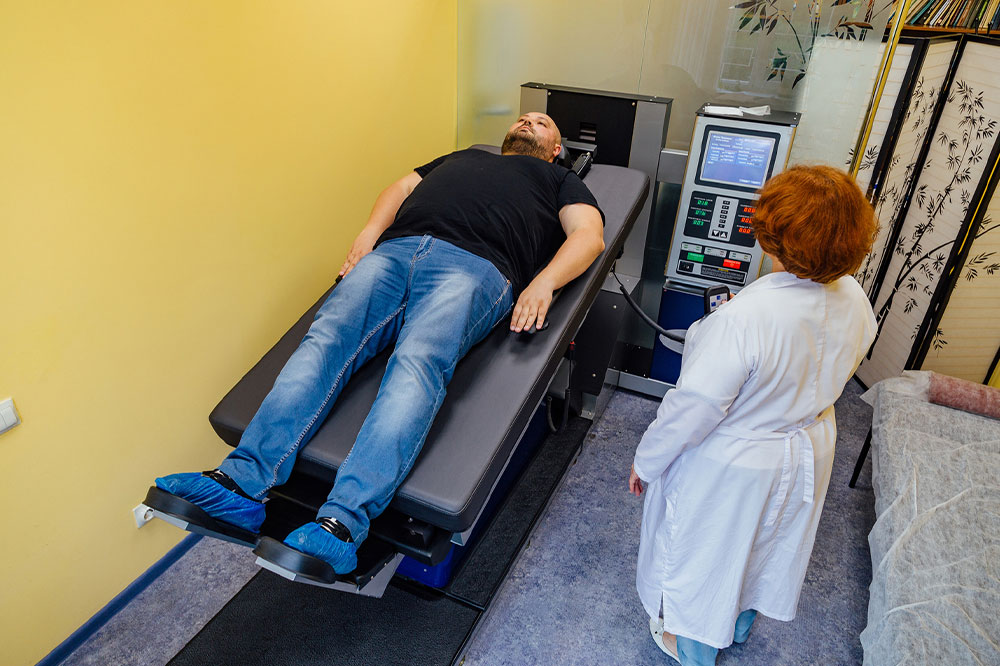
Bulging discs – Symptoms, causes, and management
Sometimes rubbery discs between the spine and vertebrae protrude outward in soft cushioning; this condition is called a bulging disc. It can cause discomfort and pain while moving as the spinal cord and nerves connected to it are pressed. Bulging discs can also result from age-related degeneration and can result in lower mobility. This condition is also called herniated or ruptured discs. This article will examine bulging disc treatment options, signs, causes, and more.
Bulging disc symptoms
Depending on where the issue is and how severe it is, a bulging disc can cause various symptoms. While some people may have mild to severe symptoms, others could not have any symptoms at all. The following are typical signs of a bulging disc:
Pain
Localized or radiating pain, which can affect the neck, back, arms, and legs, is the most common symptom. The discomfort may worsen with specific actions or activities and can be mild, acute, shooting, or a combination of all three.
Numbness or tingling
The bulging disc’s compression of the nerves can cause numbness, tingling, or a “pins and needles” feeling. The arms, hands, legs, feet, or any other location the damaged nerve serves may experience these symptoms.
Muscle weakness
Muscle weakness may occur if a compressed nerve supplying a particular muscle is affected by a bulging disc. This weakness could be trouble holding, dropping, or stumbling when walking.
A healthcare practitioner must make a proper diagnosis to accurately identify and treat this disease because these bulging disc symptoms can coexist with those of other spinal diseases.
Bulging disc causes
Numerous factors, including age-related degeneration, trauma, and lifestyle decisions, can lead to bulging discs. The following are some typical causes of the condition:
Age
The spinal discs may get damaged due to the natural aging process. The discs become less flexible and more vulnerable to injury as we age; they may deteriorate, lose water, and swell outward with time.
Trauma or injury
A bulging disc can be brought on by sudden trauma, such as car accidents, slips, falls, or sports injuries. The disc may protrude due to the stress or trauma applied to the spine.
Genetic factors
Some people may be genetically susceptible to disc issues. The strength and shape of the discs can be impacted by inherited features, rendering them more prone to bulging or other spinal disorders.
Poor posture
When standing, sitting, or lifting heavy objects, poor posture or improper body mechanics can put unnecessary strain on the spinal discs. This may result in a disc bulge and degeneration over time.
Lifestyle
The spine, especially the discs, is under increased strain when carrying more weight. The danger of bulging discs can increase because of the increased pressure, which can also hasten disc degeneration.
Bulging disc treatment options
The goals of bulging disc treatment include pain relief, reduced inflammation, and overall healing. The best course of action for a bulging disc depends on the extent of the symptoms and the location of the damaged disc.
Here are a few bulging disc treatment options:
Pain prescription treatments
Nonsteroidal anti-inflammatory prescription treatments can treat pain and inflammation.
Physical therapy
A physical therapist can create an exercise regimen to help with posture, flexibility, and the muscles that support the spine. They might also use manual therapy, ultrasonography, or electrical stimulation for pain management.
Heat/cold therapy
Applying heat or ice to the affected area might help reduce inflammation and relieve pain. While cold therapy works to numb the region and lessen swelling, heat therapy enhances blood circulation.
Discectomy
A surgical operation known as a discectomy may be considered when conservative therapy fails to produce relief. The compression and accompanying symptoms are relieved by removing the section of the protruding disc that is pushing on the nerve.
Spinal fusion
In some circumstances, a spinal fusion may be carried out if the bulging disc is creating an instability in the spine. This operation involves fusing two or more vertebrae to stabilize and stop future disc deterioration.
A healthcare specialist should be consulted to decide the best course of action for a bulging disc based on the patient’s unique situation and the severity of the condition.
While aging, wear and tear, and bulging discs are frequently linked, they can also result from trauma or bad posture. Bulging disc treatment options range from less intrusive procedures like surgery to more invasive ones like physical therapy and prescription treatments. Early detection and effective treatment can reduce symptoms and enhance overall spinal health.




